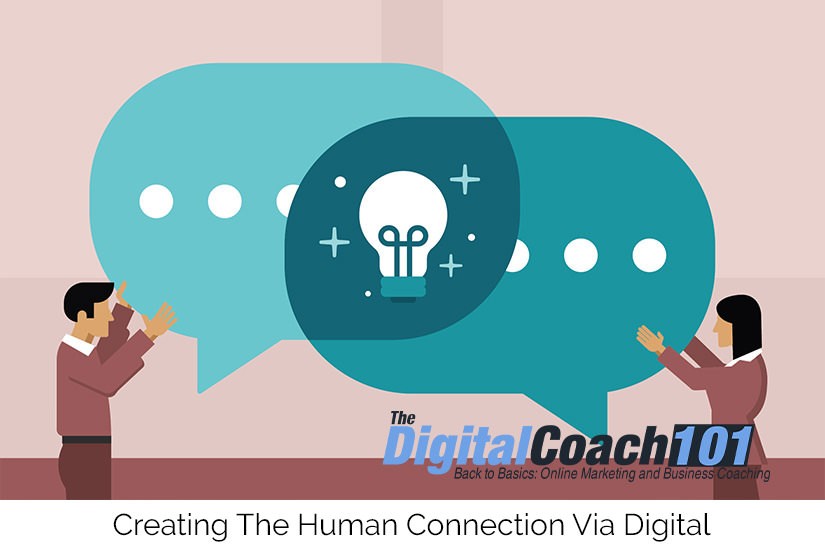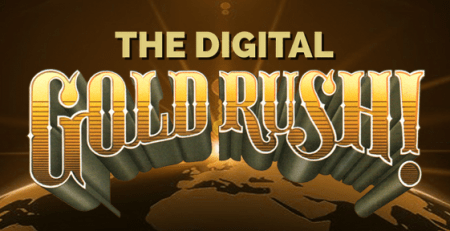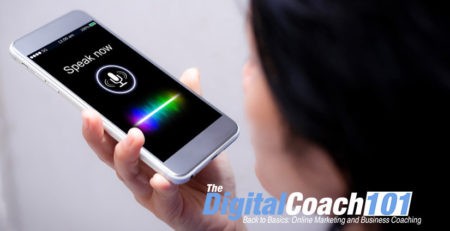Bridging The Gap Between Digital Strategy And Implementation
It’s a question people have been asking since, well, the advent of questions, really. Early Man probably had no problem devising great strategic ideas for successfully capturing a mammoth, but found it more difficult to turn those ideas into actual food for a month and a fantastic woolly floor covering. Military generals throughout history have prided themselves on their carefully devised attack plans, only to have things go badly sideways on the actual battlefield. And corporate leaders can spend hours in strategy think tanks, but somehow it just ends up as all talk and no trousers.
It’s sadly no different in the world of digital marketing. Companies invest considerable time and money into developing the shiniest, sexiest digital marketing strategies in the world, but when it comes to the actual implementation of those strategies, everyone’s running around with their hair on fire, but no one’s actually doing anything.
The question is this:
What happens? Why is there such a disconnect between strategy and implementation? And how do we bridge that gap?
Ok, so technically that’s three questions, but you can see where I’m going.
Part of the problem is that strategy is never a linear thing, which, by default, makes the execution more complicated. But complicated is not terminal. Complicated just requires a little more lateral braining to overcome.
Strategic planning is at the very heart of the success of any business, and, when it’s successfully implemented, it inspires actions and drives outcomes that make the Boss very happy. And when the Boss is happy, everyone’s happy.
Except for, possibly, Sad Simon in the small office with no window. But everyone just accepts he’s had his Happy surgically removed, so they no longer factor him into equations.
So, what can we do to make sure the Boss is as happy as a clam, or even as Larry, and we all know how happy he is? Firstly, we need to look at exactly who the boss is, and why his role in strategic implementation is so important.
Steering The Ship – The Role Of The CEO
A CEO plays a crucial role in strategy execution. S/he is actually the principal owner of strategy execution in the entire company. CEO’s cannot afford to be strategy tourists! They have to be performance-driven superheroes who do more to implement strategy than simply throw pretty Powerpoint presentations at the Board. They need to be 100 percent committed to the importance of effective strategy development and its dissemination throughout the entire company.
All of which sounds great on paper, but here’s the main problem:
Strategy – digital and otherwise – is a top-down approach, devised by the guys upstairs, with the plush offices and views of the entire city. But when these strategies filter down from senior leadership to the rest of the business, the plan for their actual tactical execution is often missing.
Why? Because the implementation of strategy is bottom-up. It gets left to the people on the lower floors who have views of the parking lot and no coffee machine. And frankly, it’s amazing just how often communication breaks down about half way down the hierarchy. Middle managers are like those annoying supporters at a rugby match who just can’t be bothered to jump up and keep the Mexican Wave going. They are the kiss of death to implementation momentum. The fatal Fizzle-Out point beyond which nothing survives.
This is where the CEO, as the captain of the ship, plays a critical role. He has to keep the momentum going. It is, perhaps, no small coincidence that almost one in five FTSE 100 CEOs are former marketers, making Marketing the second most common routes to the CEO position, after Finance.
What Is Important To The Stakeholders?
Digital Marketing, as defined by the dictionary, is “marketing that makes use of electronic devices, such as personal computers, smartphones, cell phones, and tablets, to engage with stakeholders.”
To engage with your stakeholders, you need to know who they are. And, because we’re awesome, we’re going to tell you. Basically, they are the people who are important to your business – and the people who are most important to your business are your existing customers.
So many digital marketing campaigns focus solely on attracting new customers. In fact, the best source of new business comes from customers you already have. Happy customers are the best word-of-mouth advertisers and singers of your praises ever! And you don’t even have to pay them! All you have to do is keep them happy. Look after your stakeholders and they will look after you.
A Corporate, Birds-Eye View
A crucially important area of your digital marketing strategy is to set realistic, explicitly defined goals. It’s no good being an expert archer without a specific target to aim at. Yes, you might well hit a bunch of stuff, but if it’s not the right stuff, then all you’re doing with is wasting time and arrows.
The best way to define goals that will help you hit the right targets is to step back. Take a bird’s eye view of your entire operation. In this way, you’ll have a much broader, clearer idea of what you want to do, and how you want to do it. Remember that what works for one business won’t necessarily work for yours. Although the basic ingredients in a digital marketing strategy are the same across the board, how much of each ingredient you need, and the method you use to incorporate those ingredients into your unique cake, will be different to the next guy.
Digital marketing opens up your product or service to an international market too, so use your birds’ eye position to look at all your competitors. Not just local ones. It’s definitely bigger picture time.
The Role Of The Marketing Agency
Many businesses already have a Marketing Department, so they think they’re golden when it comes to the development and implementation of digital marketing strategies. Sorry to be the burster of bubbles, but, um, no. No matter how shiny your internal marketing guys may be, they simply can’t look at your business objectively.
Internal thinking tends to get a little jaded and samey over time. New opportunities get missed simply because everyone’s busy so defaulting to what you’ve always done in the past is the path of least resistance.
A marketing agency lets you look at your business objectively through fresh eyes. It can help you develop key message points and identify customer personas. It can devise a content plan that effectively tackles your different customer segments and devise a strategy that you can then pick up, run with and own.
I hear you asking the all-important question – how? How can a marketing agency do such wonderful things? Well, dear reader, we’re about to tell you.
Copywriting
We’re now well over 1000 words into this blog, and you’re still reading. I think a dramatic pause for effect is warranted here.
Pause.
Ok, continue! Ask yourself why you’re still reading. Is it because this post looks sexy? Admittedly, it does, but, as with any relationship destined to last, good looks will only get you so far. Personality is what gets you beyond the first paragraph. And the personality of any blog post or website page is created by one thing, and one thing only:
Copywriting.
Copywriting is the sizzle that sells your steak. It’s the mystical combination of words that keeps people reading. It inspires them to take action.To buy your product, use your service, or subscribe to your newsletter. It’s the guy in the back office who pulls all the levers and switches to make your website the go-to and most trusted source of industry relevant information.
Copywriting, is, quite simply, the bomb.
Web Design And Development
I may have gone on a bit about copywriting there. But I must also state for the record that I am also a huge fan of good web design and development. These days, no matter what industry you’re in, if you’re selling a product or service you have to have a website. Countless studies show that upwards of 80% of purchase decisions are made after online research.
I know you’re busy, but please take the time to read this fascinating article from Missouri University’s Science and Technology Department. Following an extensive study, using all kinds of futuristic eye-tracking software and infrared cameras, they concluded that first impressions of a website are 94% design related. Even copywriters can’t compete with that statistic!
The way your website is designed, and the level of user experience it delivers, are absolutely critical. If people can’t find what they’re looking for quickly and easily, or if your page takes too long to load, people will move on. Good web design draws your customers in, supports them on their journey and makes their overall experience hassle free and memorable.
So get it right.
Branding Message
Hinge Marketing has a great definition of what a brand message actually is: “(It is) a compact statement that declares why the brand matters, what it stands for and how it stands apart from competitors. It’s a well you can return to again and again when you need inspiration. Or when you need to remind yourself what you stand for. A core brand message communicates the values and key differentiators that define the brand.”
To put it another way, a brand is a complex animal with many different aspects and angles. It’s like the octopus of the marketing world, and one of the most important “tentacles” is the brand message. It’s the bit that gets people excited about what it is you do. The rousing battle cry that inspires customers to go to war for you.
And while we’re knee deep in battle imagery, we might as well go a little deeper! In an over-communicated world, a good brand message is like a big old branch. One that you’ve carefully honed and whittled until it’s sharp and pointy. You will have left bits of the original branch on the forest floor. But in your hand, you’re holding an arrow that, when aimed at the right target, will bury itself deep.
Lost In Translation
Also known as “Why do digital strategy and implementation have problems talking to each other?” Have they run out things to talk about? Have they grown apart and developed different interests? If this were a couple, we’d be summoning the marriage counselors!
Which is, in a digital marketing sense, exactly what we at Digital Coach are! Instead of fixing marriages, we fix brands. We find the areas of disconnect between CEO strategy and implementation and make them friends again.
And not only do we speak your language, but we’re fully bilingual – fluent in both corporate jargon and technical vernacular. We work to translate mixed communication into actionable points for your technical, web, and marketing teams. This ensures maximum ROI while giving the captain of the ship exactly what he wants.
If your brand is a bit lost in translation, or even if it just needs a bit of help expanding its vocabulary, talk to Digital Coach. We speak your language. And we make a mean cup of coffee. How bad can that be?













